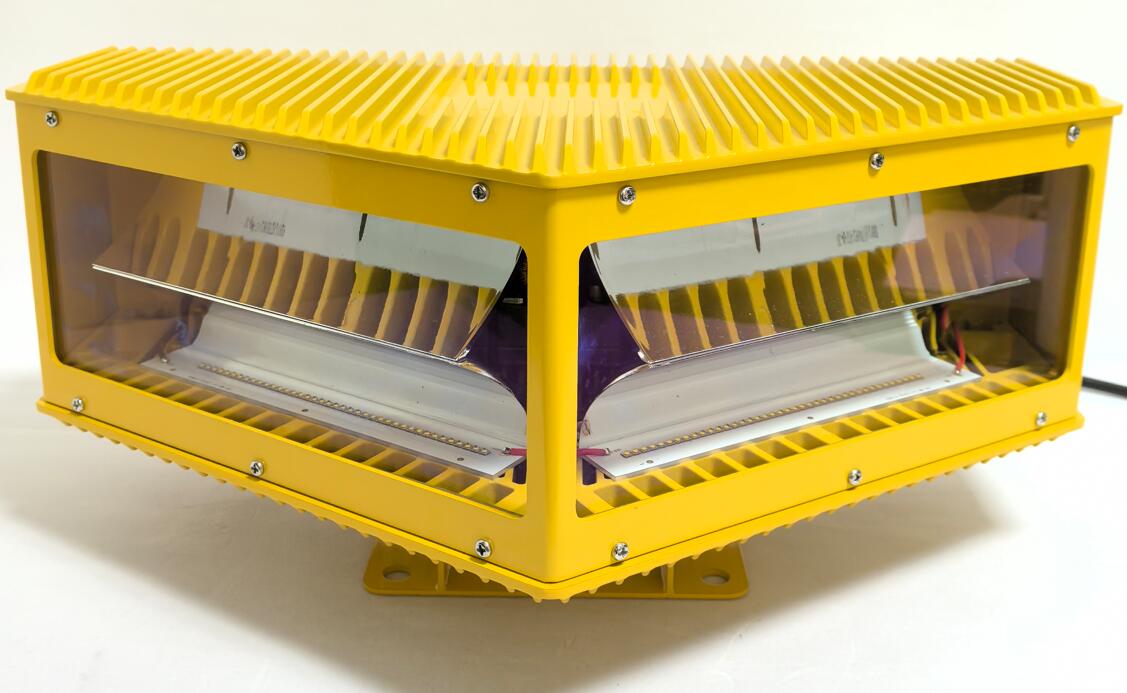LED Obstruction Lights FAA Standards: Elevating Safety with Efficient Illumination
In the complex airspace shared by aircraft, communication towers, wind turbines, high-rise buildings, and industrial chimneys, visibility is critical. Obstruction lighting plays a crucial role in keeping air navigation safe by making tall structures detectable in all lighting conditions. Among the modern solutions, LED obstruction lights FAA compliant systems have become the gold standard for marking hazards in accordance with aviation safety regulations. These systems combine energy efficiency, long service life, and visibility that meets or exceeds strict federal requirements.
Understanding LED Obstruction Lights FAA Requirements
LED obstruction lights FAA refers to obstruction lighting systems that use LED technology and comply with the Federal Aviation Administration's (FAA) lighting standards as outlined in FAA Advisory Circular AC 150/5345-43. These lights are required to be installed on tall structures that may interfere with navigable airspace.

Such lights are designed to serve as:
Warning signals for low-flying aircraft
Navigation aids during poor weather or night-time operations
Compliance tools to meet regulatory aviation safety rules
The FAA defines categories and specifications for different types of obstruction lights, such as L-810 (low-intensity), L-864 (medium-intensity red), and L-865 (medium-intensity white), among others.
| led obstruction lights faa |
Why LED Technology Is the Preferred Choice
The shift from traditional incandescent bulbs to LED obstruction lights has been driven by multiple operational and safety benefits:
Energy Efficiency: LEDs consume significantly less power compared to traditional lamps, reducing operational load.
Long Lifespan: LED systems last tens of thousands of hours, reducing the frequency of maintenance.
Instant Illumination: LEDs turn on without delay, a critical feature for aviation signaling.
| led obstruction lights faa |
Durability: Resistant to vibration and harsh weather, ideal for exposed environments.
Light Uniformity: Provides consistent brightness and visibility, reducing ambiguity for pilots.
When coupled with FAA compliance, LED obstruction lights are the most reliable and cost-effective choice for long-term deployment.
FAA Compliance: What It Involves
To be labeled as compliant, LED obstruction lights FAA certified must adhere to strict guidelines, including:
Minimum Light Intensity: Specified in candela based on light type and visibility range (e.g., 2,000 candela for red lights, 20,000+ for white).
Color Specifications: Red or white lighting depending on structure height, location, and operational time (day/night).
Flash Patterns: Some FAA categories require synchronized flashing rather than steady burn.
Light Distribution: Must be visible from 360 degrees around the structure with vertical and horizontal beam spread defined by the FAA.
Environmental Testing: Lights must pass performance tests in temperature extremes, moisture, and dust.
Non-compliance can lead to FAA citations and may delay project approvals for construction or tower operation.
Key Applications of LED Obstruction Lights FAA Compliant
Structures that typically require FAA-compliant LED obstruction lighting include:
Telecommunication Towers
Wind Turbines
High-Rise Buildings
Chimneys and Smokestacks
Crane Booms in Urban Areas
Bridges and Antenna Masts
Depending on the height and location of these structures, different combinations of lighting (e.g., medium-intensity red at night and white during the day) may be mandated.
Configuration Options and System Design
A standard LED obstruction lights FAA system may include:
Top-Level Lights: Positioned at the highest point for maximum visibility.
Intermediate Lights: Required for structures taller than 200 feet to mark intermediate levels.
Control Units: Manage timing, flashing, and synchronization with other nearby structures.
Photocells or Light Sensors: Automatically switch between day and night modes.
Systems can also be integrated with smart monitoring solutions, sending real-time status alerts for maintenance or malfunction, improving safety and reducing downtime.
Benefits for Facility Operators
Operators and owners of tall structures benefit greatly from upgrading to LED obstruction lights FAA compliant solutions:
Regulatory Assurance: Avoid penalties and project delays by meeting FAA mandates.
Reduced Maintenance: LEDs minimize climb-and-replace operations, lowering labor risk and cost.
Improved Reliability: Essential for remote or harsh locations, such as offshore wind farms.
Lower Environmental Impact: LED systems align with sustainability initiatives through lower energy use and fewer replacements.
Modern Trends in FAA-Compliant LED Obstruction Lighting
The industry is evolving quickly, with several trends defining the future of FAA-compliant obstruction lighting:
Solar-Powered Systems: Ideal for remote sites without grid access.
Wireless Monitoring: Integration with telemetry and IoT platforms for performance tracking.
Modular Designs: Easy replacement of components without full system shutdown.
Radar-Activated Lighting: Lights that activate only when aircraft are nearby, reducing light pollution in rural areas.
These innovations improve not only safety but also adaptability to a wide range of site conditions and environmental concerns.
Maintenance and Inspection Best Practices
Even with their extended lifespan, LED obstruction lights FAA systems require regular inspection to ensure continuous compliance:
Monthly Visual Inspections: Check for damage, dirt, or misalignment.
Annual Testing: Confirm light intensity, flashing patterns, and sensor function.
Remote Monitoring Checks: Validate status signals and alarms through the control system.
Proactive maintenance keeps lighting systems reliable and ensures uninterrupted airspace safety.
FAA Obstruction Marking vs. Lighting
While lighting is a primary method of making structures visible to pilots, FAA guidelines also allow or require marking in certain scenarios. This typically includes:
High-visibility paint schemes (orange and white stripes)
Checkerboard patterns for broad surfaces like water towers
Combination of lighting and marking for optimal recognition
In cases where lighting is impractical due to power constraints or environmental regulations, marking may be used instead or in tandem.
The increasing vertical growth of infrastructure and expanding aviation activity make the role of LED obstruction lights FAA compliant systems more critical than ever. These lighting systems act as silent sentinels, protecting aircraft and ground installations alike. By combining energy efficiency, smart features, and full regulatory compliance, FAA-certified LED obstruction lights provide a future-proof solution for safe, visible, and reliable airspace management.
